Do you want high-performance tires like those in race cars? Your tires probably won’t achieve the track-like performance with your car, but there is an option. Fill them with nitrogen instead of normal air.
Can you fill your tires with nitrogen at home instead of car center refills? Yes! It’s easy to give your tires a refill by yourself by using a nitrogen-filled cylinder and following the correct steps. Remove as much air as possible from the tires, then refill them with nitrogen. A 96-percent nitrogen fill is good enough since you cannot get rid of all the air before you start filling.
Filling your tires with nitrogen at tire centers or car dealerships will quickly pile up your car maintenance costs. So, why don’t you invest in a home nitrogen refill setup? Here’s what you will need. Also, check the table below for the analyzed numbers.
For your home use, you will need a nitrogen cylinder (mid-sized tank) just like the ones you use for welding gases. You can opt for a tank that holds about 300 cubic feet of nitrogen, which will be enough for about 60 refills.
The mid-sized tank is a reasonable investment. Getting the 300 cu/ft size will cost about $400, so can opt for a small-sized one like a 125 cu/ft on Amazon. You’ll pay about $40 to refill 300 cu/ft if you run out of nitrogen.
If you do the calculations, your 300 cubic feet of nitrogen cylinder can refill your car tires about 15 times. You will end up saving lots of money since most nitrogen refills cost between $3 and $10 per tire ($12 – $40 for all tires).
Tire inflators let you regulate how much air fills your tires. It connects from the nitrogen tank to the tire valve.
Connecting your digital tire inflator or gauge is a matter of plugging and screwing. You can use Teflon tape for an air-tight connection to the gas cylinder.
Some inflator packs come with standard valve caps, which you won’t use (use the nitrogen valve caps instead).
You don’t want all your effort in setting up a nitrogen filling system to go to waste. Get a portable nitrogen analyzer to check the nitrogen percentage in your tires after each refill.
Besides the cylinder, an N analyzer is the other expensive part of your DIY nitrogen filling station.
After your tires are rocking at least 96 percent nitrogen, you want people to know you’ve gone green.
Have you ever seen those green tire valve stem caps labeled N2? Those are the ones you need to seal your tires.
As a car owner who loves DIYing, a lift jack is part of my toolset. If do not have one, it will another addition to the things you need during your tire filling procedure. I recommend getting a heavy triple lift jack (check the exact price on Amazon).
With the breakdown of all the things you need to fill your tires at home with nitrogen, we can estimate how much you will spend.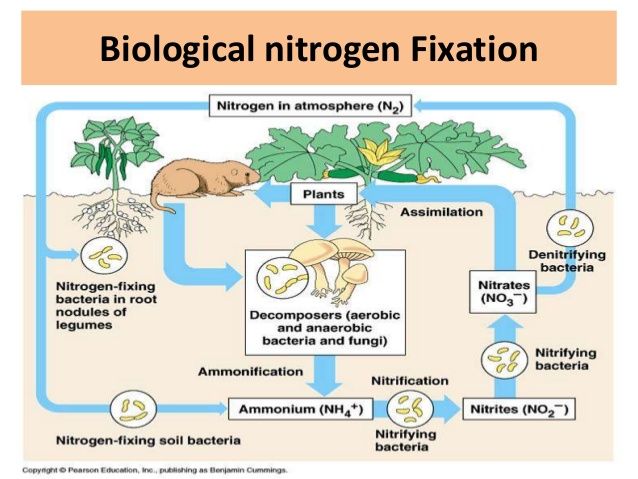
| Part | Estimate cost |
| Nitrogen cylinder (300 cu/ft) | $400 |
| Digital tire inflator | $28 |
| Portable nitrogen analyzer | $396 |
| Nitrogen valve caps | $8 |
| Lift jack | $250 |
| Initial cylinder gas fill | $40 |
| Total | $1,122 |
| Total (without jack and analyzer) | $476 |
Here’s an interesting comparison table.
| Long term costs | ||
| Filling at home cost | Filling at gas center cost | |
| First 15 tire fillings | $0 | $300 |
| Next 15-30 tire fillings | $2.67 | $300 |
| Next 30-45 tire fillings | $2. 67 67 | $300 |
| Next 45-60 tire fillings | $2.67 | $300 |
Let’s break down the second table. We’re working with a 300 cubic feet cylinder that can roughly fill 60 tires. It means you can fill all the four tires of your car 15 times before buying another supply of nitrogen for your cylinder.
As mentioned, filling your tires at a gas center costs anywhere between $3 and $10. Let’s use $5 per tire fill, which means you’ll spend $20 for all your tires.
The purpose of filling your tires with N gas is to enjoy the benefits it offers. We’ll discuss the benefits later in this post, but first here are the correct steps you need to follow.
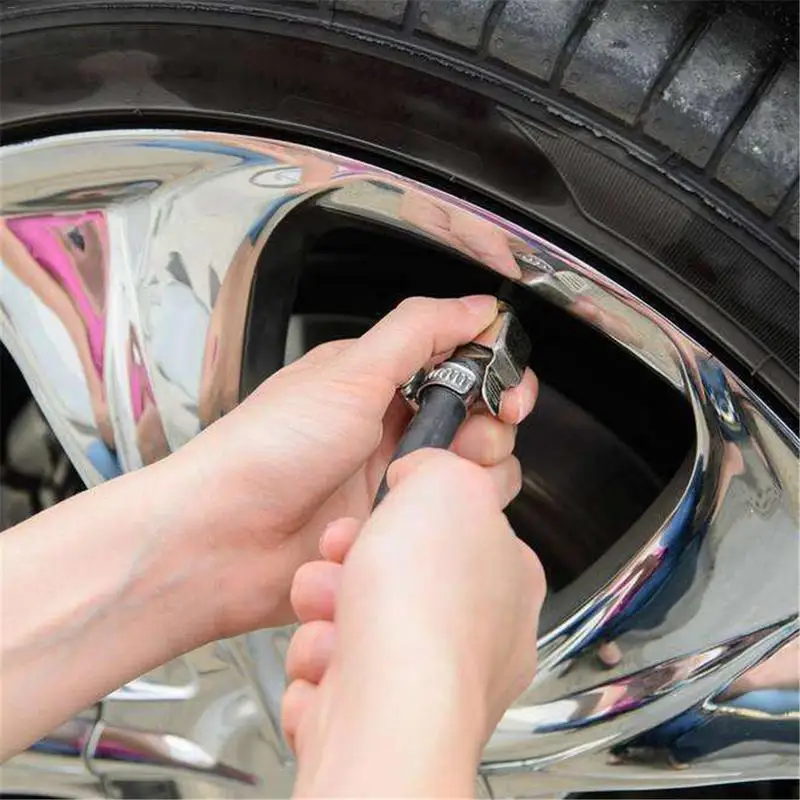
Can I put nitrogen in my tires myself? Where can I fill my tires with nitrogen? These are some of the questions I saw people asking online during my research.
If you follow the steps I have listed above you can clearly fill your tires yourself, and do it at home.
Plug the nozzle of your N analyzer onto the tire valve. As air escapes from inside the tire, the analyzer will display the percentage of N.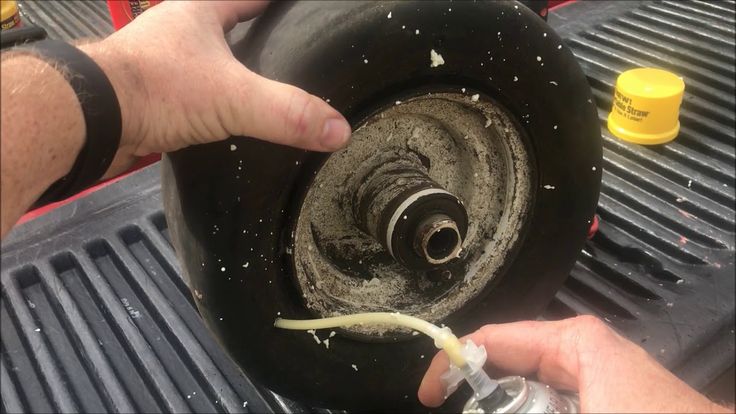
Tires filled with nitrogen will generally show a percentage higher than 92.
You won’t have to worry much about your tires losing pressure if you go the ‘green way’. However, you can still use the digital tire inflator to check the tire pressure when it’s cold, before driving, or after 3 hours of driving. When using the inflator to check your tire psi, do not connect it to the cylinder.
Compare the psi you’ve measured with what the car manufacturer recommends. You can find those details on the doorjamb sticker usually found on the driver’s side. Both readings should be roughly the same. The inflator has a deflation button in case of excess pressure.
Yes, a drop in temperature affects tires filled with nitrogen. During the cold season, a 10-degree Fahrenheit drop will cause a two percent pressure loss in N-filled tires.
The solution for this issue is to fill your tires 10 percent higher than the manufacturer recommended psi.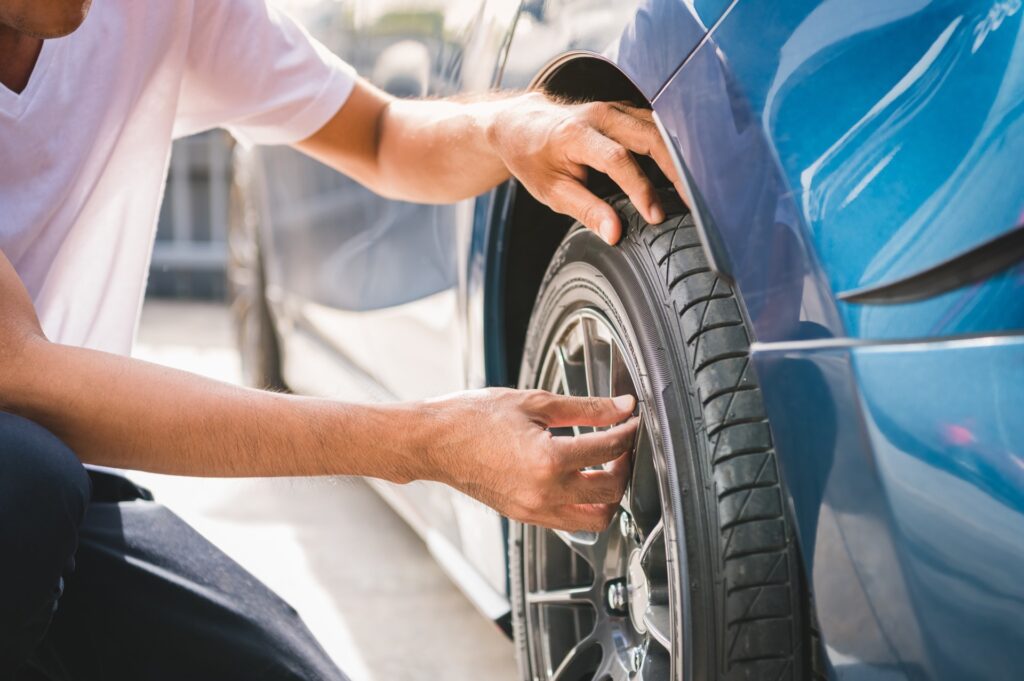 However, do not go beyond the tire’s recommended psi. It might blow up.
However, do not go beyond the tire’s recommended psi. It might blow up.
By nature, compressed nitrogen is more homogenous and has large molecules. Its large molecules minimize tire leak-outs. However, there are other benefits of using N to fill your car tires.
N does not heat up as quickly as compressed air does. Because of that, your tire temperature will remain consistent hence minimizing the chances of tire blowouts associated with overheated tires.
A tire operating temperature plays a part in how it wears out. If you opt for nitrogen, your temperatures will remain almost constant even after long drives hence causing minimal wear and tire associated with heated tires.
You’re guaranteed consistent tire pressure for the most part of using your car. Nitrogen maintains its temperature in a hot environment hence your tires won’t have an increased pressure like in air-filled tires.
Nitrogen particles are large compared to normal air so pressure loss will be slow even in cold weather.
N is inert and dry. It is way less reactive compared to normal compressed air that can react with moisture and cause rust on the metal rim.
Nitrogen is considered a green alternative since tire pressure is constant and consistently at the right level. I turn, your car tires will run smoothly with less rolling resistance hence fuel-efficient and save on fuel expenses.
Because N can lengthen the life of your tires there will be no need to replace them often hence help in slashing your tire maintenance costs.
Besides the advantages I have listed, vehicles that operate in hazardous areas like mines should use nitrogen in their tires to reduce fire risk since it is an inert gas.
Also, you can consider using nitrogen instead of normal air tire filling because of the following reasons.
Ditching compressed air tire filling comes at a cost.
For instance, here is a valid question.
You’ll need to think about the cost. The standard cost to fill a tire can vary from $3 to $10 per tire. The price depends on variables like tire size and pressure.
On the other hand, standard air is mostly free or $1 at many gas centers. Some dealerships, tire centers, and service stations offer free refills on-site if you buy their tires or a car from them.
Nitrogen can be challenging to find since it’s less popular as a tire refill gas and you’re more likely to find it in select service stations.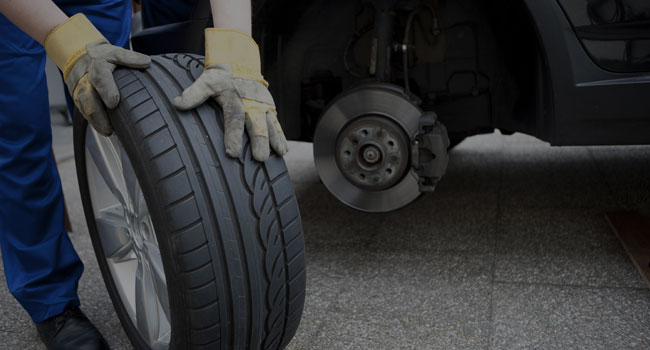
Some tire manufacturers have policies regarding filling up their tires with nitrogen. Not all tire brands appreciate nitrogen use and may not cover it in their warranties.
I advise that you check with the tire manufacturer to see if a particular tire model you have will still be covered by their guarantee or not.
Filling your tires with nitrogen at home is simple. The huddle you’ll have to cross is the initial investment cost of buying the cylinder, digital tire inflator, nitrogen analyzer (you don’t have to buy it), and the valve caps. In the long run, you’ll save money while enjoying better performing tires than when using normal compressed air in your tires.
Automotive service facilities have machines for Nitrogen inflation, but those machines are too large and expensive for home use. Our inexpensive system works because you use inflation less frequently than a commercial shop.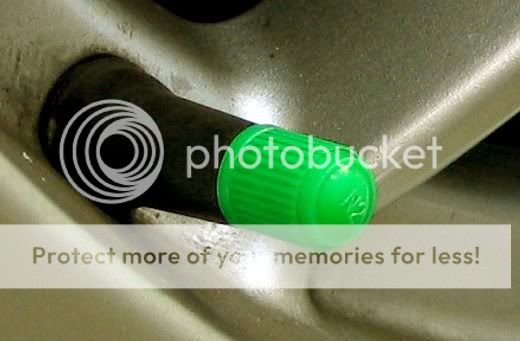 Our system safely stores Nitrogen at 2216 psi. A mid-sized 33 cubic foot cylinder is less than two feet tall and eight inches across, yet it can inflate up to 10 empty car tires or 120 empty bicycle tires before needing a refill. You can fill tires of all kinds including Cars, SUV’s, Light Trucks, RV’s, Lawn Tractors, Motorcycles, Bicycles and Scooters. After filling your tires, you now have a convenient system handy for immediate top-offs. If you already have Nitrogen filled tires on you cars, the system could provide 100’s of home top-offs before needing the system refilled. No more trips back to the dealer!
Our system safely stores Nitrogen at 2216 psi. A mid-sized 33 cubic foot cylinder is less than two feet tall and eight inches across, yet it can inflate up to 10 empty car tires or 120 empty bicycle tires before needing a refill. You can fill tires of all kinds including Cars, SUV’s, Light Trucks, RV’s, Lawn Tractors, Motorcycles, Bicycles and Scooters. After filling your tires, you now have a convenient system handy for immediate top-offs. If you already have Nitrogen filled tires on you cars, the system could provide 100’s of home top-offs before needing the system refilled. No more trips back to the dealer!
Nitrogen tanks provide immediate tire inflation or top-offs anywhere without electricity. Lightweight alloy components combined with the light alloy cylinders we offer are easy and safe to transport when handled properly. Our smallest 6 cubic foot system takes-up very little space and the complete system with cylinder only weighs about 5 pounds. Perfect to carry in the corner of your your trunk, it’s even being carried on-board by light aircraft for easy top-offs at remote airports. Our 33 cubic foot cylinder is less than two feet tall and includes a convenient carry handle. We offer an optional quick-release vehicle mounting bracket as well.
We offer attractive, rust-free aluminum-alloy Nitrogen cylinders which are light weight and easy to transport. Please be aware our cylinders are shipped empty. Commercial shipping companies do not want to carry highly pressurized containers since they do not strap-down packages. You can also buy or rent cylinders from local gas suppliers. Generally those suppliers will provide painted steel cylinders. We recommend you check with different types of providers in your area before deciding on your options.
If you get our cylinders, you will want to do refills. Before you buy our cylinder, make sure you have a refill provider. (NOT a swap-out provider!) Cylinder refills are most often available from local welding suppliers and many welders. Refill costs are very inexpensive. Prices vary but should generally be around twenty bucks. Refills usually take only a minute or two, so many providers are willing to do it on-the-spot. The best place to start is a Yellow Pages Search for “Welding Supply”. When you first ask about refills, many are hesitant without more details. They may inquire why you wouldn’t rather swap tanks, and become even more hesitant when you tell them you have a new aluminum tank. With our tanks, simply state that you have “A new alloy cylinder with a CGA-580 valve that is DOT certified and stamped for inert gas”. If you’re still having trouble, contact Prestacycle Customer Service.
Refill costs are very inexpensive. Prices vary but should generally be around twenty bucks. Refills usually take only a minute or two, so many providers are willing to do it on-the-spot. The best place to start is a Yellow Pages Search for “Welding Supply”. When you first ask about refills, many are hesitant without more details. They may inquire why you wouldn’t rather swap tanks, and become even more hesitant when you tell them you have a new aluminum tank. With our tanks, simply state that you have “A new alloy cylinder with a CGA-580 valve that is DOT certified and stamped for inert gas”. If you’re still having trouble, contact Prestacycle Customer Service.
Some larger gas supply companies may only offer to give you pre-filled cylinders. They will sell or rent to you the first cylinder, and then swap it for a full one each time you need a refill. They can also offer to deliver, a good advantage for higher volume use. Be aware that swap-only services means you will have a certified, but USED cylinder. Also know that they may not have swap-ready tanks available in the size you want at all times. Swapping is NOT a good option if you purchased our shiny new alloy cylinders. They will trade it for a steel tank that has been around. Please don’t be fooled if they tell you swapping is your only option. Many of our customers tell us these providers push hard to convince you their way is the only way. You can always contact us to help find a refilling supplier. Check here for your closest swapping supplier: http://www.airgas.com/
Also know that they may not have swap-ready tanks available in the size you want at all times. Swapping is NOT a good option if you purchased our shiny new alloy cylinders. They will trade it for a steel tank that has been around. Please don’t be fooled if they tell you swapping is your only option. Many of our customers tell us these providers push hard to convince you their way is the only way. You can always contact us to help find a refilling supplier. Check here for your closest swapping supplier: http://www.airgas.com/
Nitrogen is Air – without the bad stuff. Air is about 78% Nitrogen, 20% Oxygen with moisture and some other gases. Tires loose pressure because air goes right through the rubber. This is called permeation. The Oxygen in air escapes much faster, causing quick initial pressure loss. Laboratory guides rate the permeability rate through rubber of Oxygen at 23.3 vs. Nitrogen at only 9.43. Oxygen, CO2 and Helium all leak faster than Nitrogen. Oxygen is also reactive. “Oxidation” weakens, dries and cracks rubber. It can also damage Alloy rims and break-down sealants. Moisture can corrode valves from the inside causing problems with proper valve closure. All problems with regular air are accelerated by pressure. Nitrogen is the best solution. Nitrogen inflated tires maintain a more consistent tire pressure across different temperatures. Tire performance is more reliable and efficient when recommended tire pressure is maintained and heat is reduced. Most auto dealers recommend Nitrogen inflation exclusively for vehicles with tire pressure monitoring systems to prevent heat-related pressure warnings from your vehicle.
“Oxidation” weakens, dries and cracks rubber. It can also damage Alloy rims and break-down sealants. Moisture can corrode valves from the inside causing problems with proper valve closure. All problems with regular air are accelerated by pressure. Nitrogen is the best solution. Nitrogen inflated tires maintain a more consistent tire pressure across different temperatures. Tire performance is more reliable and efficient when recommended tire pressure is maintained and heat is reduced. Most auto dealers recommend Nitrogen inflation exclusively for vehicles with tire pressure monitoring systems to prevent heat-related pressure warnings from your vehicle.
Our New Regulator is small, lightweight, yet durable. It has a micro-gauge that shows you how much Nitrogen is left so you’ll know when you need a refill. The body of the regulator twists to control flow rate. Twist all the way to the right and you can close it completely with zero flow. Turn counter clockwise from there to open the flow rate to the desired level for small tires or keep turning to increase flow for large tires.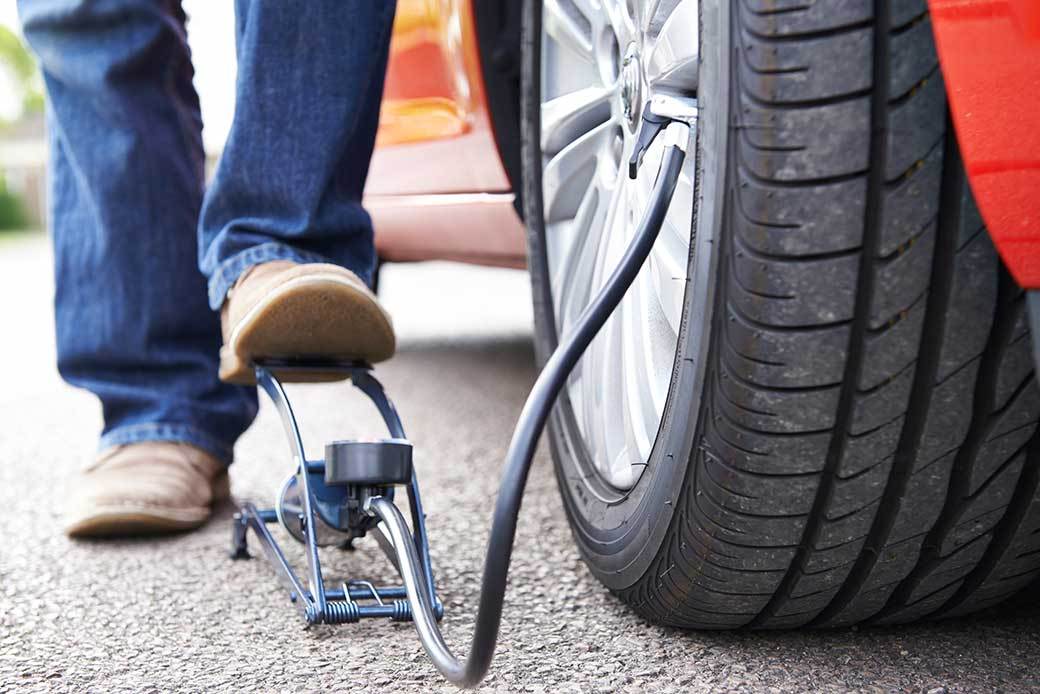 It’s perfect for portable inflation with any size cylinder. It’s also perfect for Shop use and works with the largest cylinders you can buy for professional inflation. We recommend Aluminum Cylinders for portability. We sell them on our Website and through our Dealers. Our Regulator is compatible with all steel Nitrogen cylinders as well. You can purchase any CGA-580 valve cylinder directly from your local Nitrogen refill provider. Our system is compatible with all North American cylinders rated for Nitrogen.
It’s perfect for portable inflation with any size cylinder. It’s also perfect for Shop use and works with the largest cylinders you can buy for professional inflation. We recommend Aluminum Cylinders for portability. We sell them on our Website and through our Dealers. Our Regulator is compatible with all steel Nitrogen cylinders as well. You can purchase any CGA-580 valve cylinder directly from your local Nitrogen refill provider. Our system is compatible with all North American cylinders rated for Nitrogen.
Please observe all safety information provided with the unit.
System is sold and shipped empty. Cylinder must be filled before use.
 Some may fill it on-the spot, others might expect to drop if off and be able to pick it up the next day. Pre-filled cylinder swaps are also available. Check here for your local filling or swap-out location: http://www.airgas.com/
Some may fill it on-the spot, others might expect to drop if off and be able to pick it up the next day. Pre-filled cylinder swaps are also available. Check here for your local filling or swap-out location: http://www.airgas.com/
Prestacycle warrants the Prestacycle Nitrogen inflation system to be free of defective material or workmanship for one year, and under the conditions stated herein. This warranty will not apply to wear and tear from repeated use or transportation.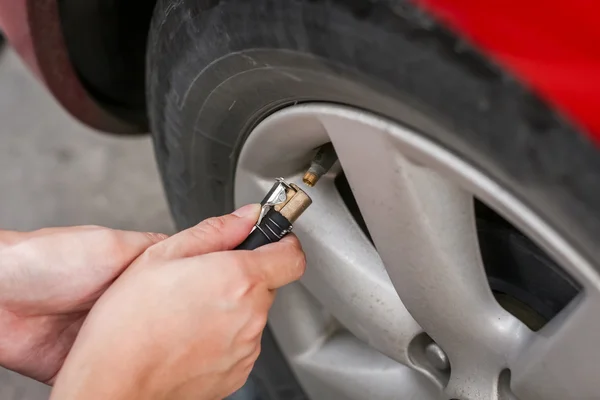
This warranty is expressly limited to repair or replacement of product found to be defective. Prestacycle assumes no liability for loss due to failure of any product to perform satisfactorily. Prestacycle makes no other warranty, expressed or implied, except that of title. Any and all other warranties are expressly disclaimed.
This warranty applies under conditions of intended use and is exclusive of equipment subjected to: Failure to follow recommended service procedures, Excessive duty cycle, exposure to the elements, shipping damage and modification not authorized by Prestacycle. No warranty claims will be honored without prior authorization for repair from Prestacycle. Any replaced or repaired equipment will be warranted for the remainder of the warranty term only.
One of the latest trends in our automotive services market is the use of nitrogen in tires. Fans of this method assure a significant reduction in fuel consumption. It is also believed that the wheels practically do not go down due to the larger size of the gas molecule compared to air. Many tire fitting stations and service centers offer refueling of tires with this gas.
It is also believed that the wheels practically do not go down due to the larger size of the gas molecule compared to air. Many tire fitting stations and service centers offer refueling of tires with this gas.
There are also opponents of the method who completely dismiss all the arguments of the supporters. Their main argument is the well-known fact that air is 78% nitrogen, 21% oxygen and other gases. Question: why inject another 15% nitrogen? It is unlikely that an additional volume of gas can dramatically improve the performance of a car tire. Moreover, this service costs more.
Let's look into the situation, consider all the pros and cons of nitrogen in tires.
In the automotive world, pumping nitrogen into tires has been around for a long time. True, this method was first used in the "royal" class of racing - Formula 1. However, like most other technologies that have been tested on cars before manufacturers start using them on production cars.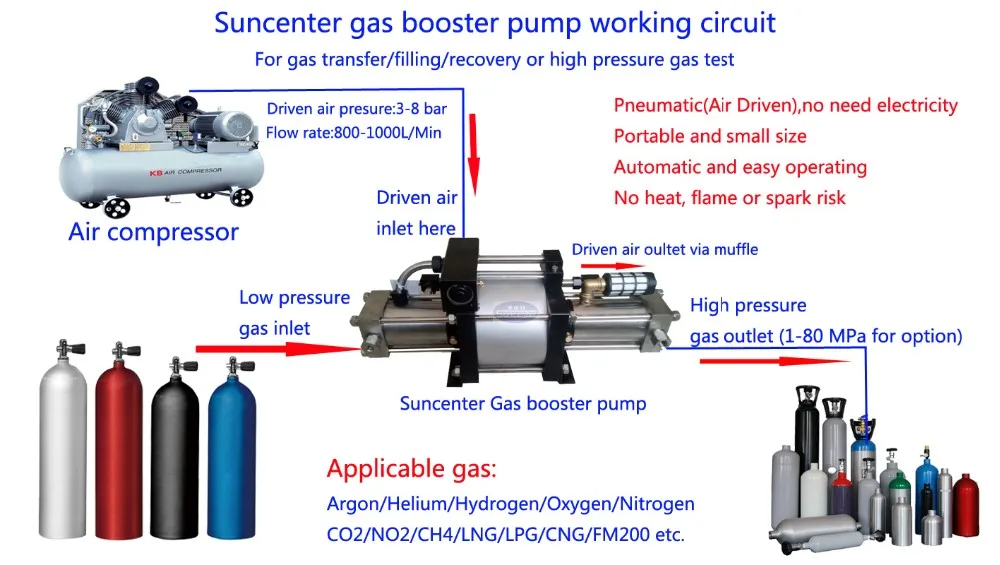 In this case, an air-nitrogen mixture was used, and not pure gas. The method was first used in the middle of the last century.
In this case, an air-nitrogen mixture was used, and not pure gas. The method was first used in the middle of the last century.
In the case of Formula 1, the use of this method provides at least one big plus - increased safety. The fact is that in the event of a car igniting, the air from the burst tire is an oxygen blower, igniting the flame even more. In the case of nitrogen injection into tires, this effect will no longer be, that is, the risk of fire is reduced.
In the US, nitrogen is used instead of air in tires in commercial vehicles. This is not a mandatory rule, but many truck owners and carriers use alternatives.
In everyday life, cars are not often used to the limit of their capabilities, fires occur very rarely. Therefore, pumping gas instead of air just for the sake of greater safety is impractical, but there are other advantages.
Nitrogen tire inflation has both supporters and opponents. Moreover, they are present among professionals, including owners of tire stations and service stations, and among amateurs.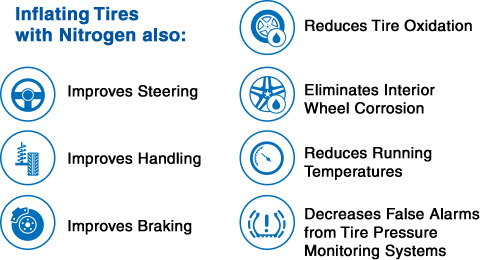 The advantages of the method include:
The advantages of the method include:
This is one of the most common arguments for nitrogen instead of air. Its essence boils down to the fact that the specified gas is lighter than air, respectively, the lower weight of the wheel will lead to a decrease in fuel consumption.
To do this, you need to deal with real numbers. A cubic meter of air, which is pumped into tires, has a weight of 1.29 kg, and a cubic meter of gas - 1.25 kg. A standard passenger car wheel holds about 75 grams of pure gas and 77 grams of air mixture. Therefore, the difference in fully inflated wheels will be a few grams, which is negligible for significant fuel savings.
The difference is almost imperceptible - much more weight on the wheel adds dirt between the treads or pebbles.
Winter Drive protection
Tires Goodyear UltraGrip Arctic 2 SUV
Winter Drive Protection Sound Comfort
Rating:
4.5
Tires Goodyear UltraGrip Ice 2
Winter Drive protection
Tires Goodyear UltraGrip Performance+ SUV
Winter Drive protection
Tires Goodyear UltraGrip Arctic 2
Winter Drive Protection Run On Flat Sound Comfort
Tires Goodyear UltraGrip Performance+
Stable pressure is another argument for fans to pump nitrogen instead of regular air into the wheel. In this case, the argument is the larger size of the gas molecule compared to the size of the oxygen molecule. Accordingly, oxygen seeps through microscopic cracks and holes in the tire faster. As a result, the pressure drops and the wheel lowers.
In this case, the argument is the larger size of the gas molecule compared to the size of the oxygen molecule. Accordingly, oxygen seeps through microscopic cracks and holes in the tire faster. As a result, the pressure drops and the wheel lowers.
Yes, it is. But do not forget that ordinary atmospheric air is 78% nitrogen, and only 21% oxygen. Therefore, when the pressure drops in the wheel, it is pumped up, thus adding even more nitrogen from ordinary air. For several years of operation, the wheel is almost completely inflated with gas alone.
Nitrogen practically does not expand when heated, so the pressure in the tire will remain constant when the temperature changes. In contrast to this statement, it is worth noting that more than three-quarters of the air is occupied by nitrogen. Other gases also do not expand much, so the pressure difference in tires filled with air or nitrogen when heated is not too great to take into account.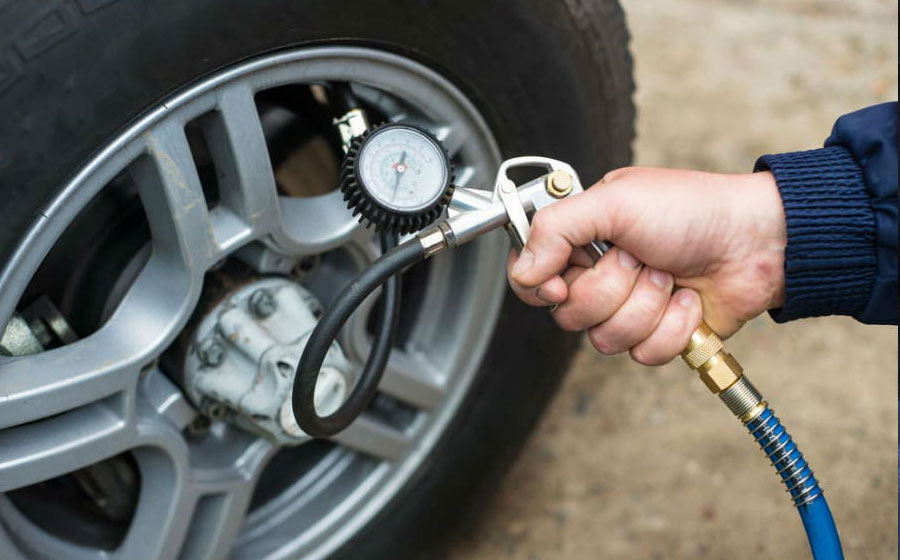
Proponents of the method claim that the absence of oxygen provides additional protection for the material from aging. Yes, this is a fair remark, but does it make any practical sense? Rubber is exposed to other factors - aggressive environment, moisture, sunlight, and so on. All this does not contribute to the extension of service life, but no one is going to use tires forever. There are certain operating times that are not significantly affected by the gas used.
A lower noise level indicates a tire filled with clean gas rather than atmospheric air. Yes, by simple measurements at a speed of 100 km / h, the noise level in the first case is 65 dB versus 68 dB in the second. Is it good or bad? Just imperceptibly - a difference of 3 dB is absolutely negligible.
A wheel filled with nitrogen is less likely to explode. In fact, the wheel will explode only in the case of ruthless operation of the car, which is very rare in ordinary life. Moreover, in fact, the wheel does not explode, but bursts - there is a sharp loss of pressure when the tire structure is destroyed. And this can happen when hitting an object or obstacle.
And this can happen when hitting an object or obstacle.
Also, do not pay serious attention to the advice of those who recommend less checking the tire pressure with nitrogen. Checking should be done as often as the manufacturer recommends, and the number of checks does not depend on the type of mixture. How much the wheel “holds” is largely influenced by the composition of the rubber, its condition. A normal tire without damage is able to hold pressure for years
But metal corrosion is more pronounced when air is used. The oxygen contained in it is an oxidizing agent. It enters into a chemical oxidation reaction even at low temperatures, affecting the wheel and rubber. This statement can be attributed to the really positive aspects of nitrogen injection.
The downside of using nitrogen instead of air in your car tire can be the price. After all, the technology provides for the removal of air from the wheel and then the injection of clean gas instead.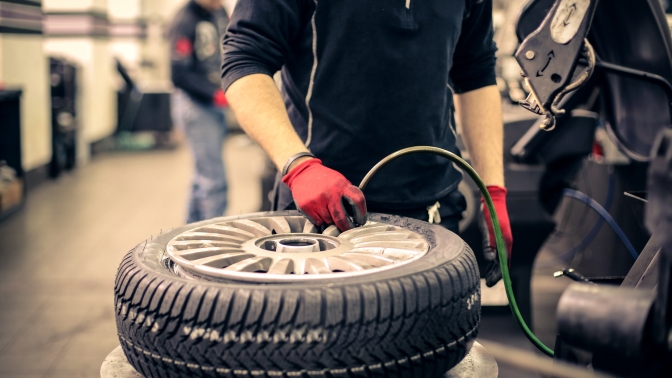 Naturally, you need to think carefully about whether it is necessary to pump in nitrogen, or whether it is better to use the traditional method. We did not find significant advantages, representatives of the main tire brands have a similar opinion. To determine why to do this, you need to think carefully, because there are no pronounced advantages.
Naturally, you need to think carefully about whether it is necessary to pump in nitrogen, or whether it is better to use the traditional method. We did not find significant advantages, representatives of the main tire brands have a similar opinion. To determine why to do this, you need to think carefully, because there are no pronounced advantages.
Another disadvantage is the need to use special equipment, gas cylinders are also needed. This can only be afforded by special service centers for car maintenance, tire shops. Any car owner can inflate a tire with a compressor or even a simple pump, for this it is not necessary to be a professional. With nitrogen, this will not work - in a garage or in the middle of a highway you will not be able to pump gas, at least without the appropriate equipment.
The following shortcoming cannot be called a pure disadvantage of the method, but still its opponents often talk about it. The essence of their refutation boils down to the fact that in simple air the nitrogen content is at least 78%, so it makes no sense to pump in an additional 15%.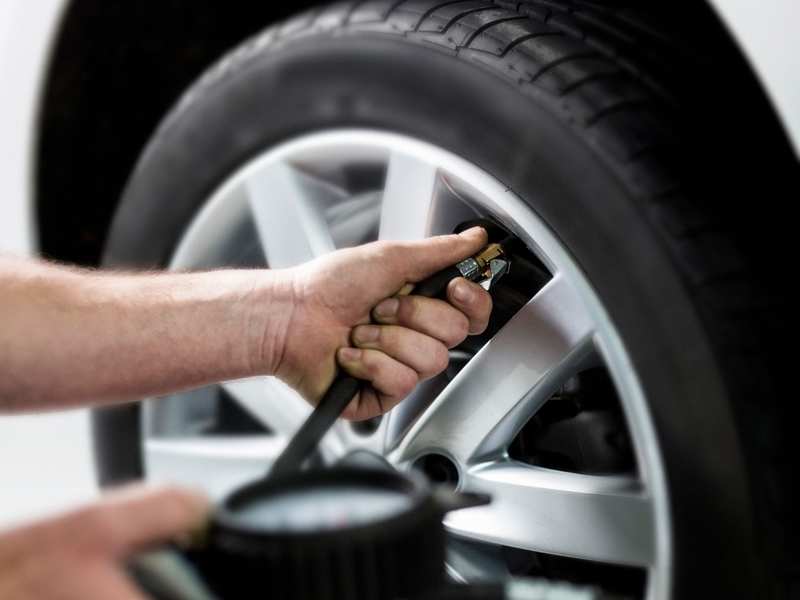
The argument for using nitrogen in tires is the smooth running of the vehicle. There is no obvious confirmation of this advantage, just the pressure in this case is slightly less - the wheel is under-inflated, which ensures smooth movement on uneven road surfaces.
It is a clear myth that when a tire is punctured, gas escapes more slowly than pure air. The reason for this is the larger size of its molecule. This is not true, and any puncture can “empty” the wheel in a matter of moments.
For example, in the rules of the notorious Formula 1, the elite of motorsport, there is no mandatory requirement to use nitrogen exclusively. Choice is provided, which means there is no advantage of one method over another. For road cars, the situation is similar, but with one clarification. The cost of using nitrogen in vehicle tires is much higher and this is a significant disadvantage. The question arises - why overpay if there are no benefits as such? The answer depends solely on the preferences of a particular car owner.
The benefits of using nitrogen to inflate (refill) wheels and tires are as follows:
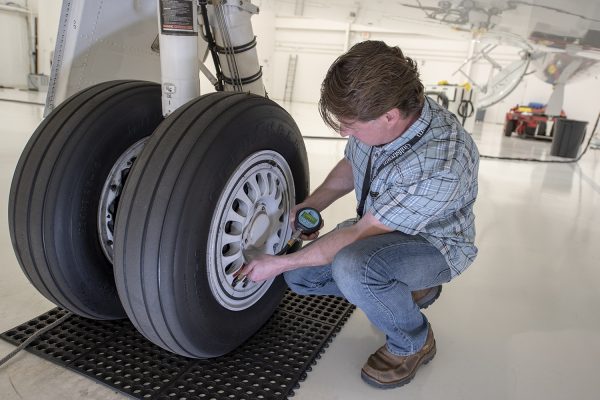
In addition, it is important to elaborate on the advantages that filling a tire with nitrogen will give you compared to filling a wheel with air.
Advantages of filling a tire with nitrogen compared to filling a wheel with air:
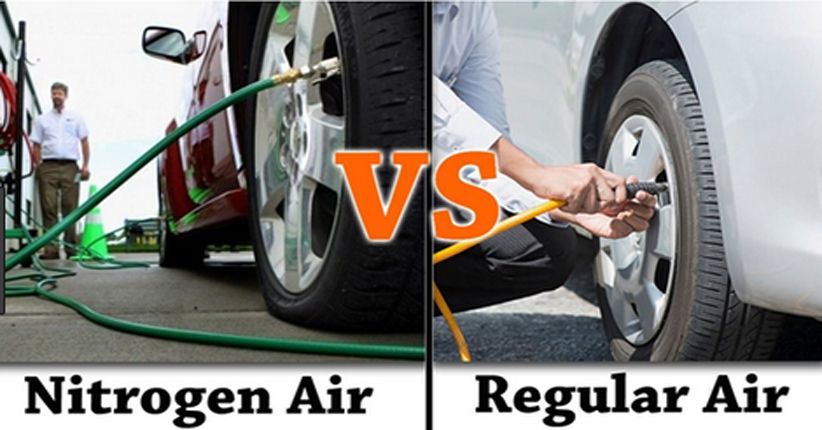
All these factors contribute not only to improving the performance of the tire, but also ensures the safety of the car on any road.
As a result, each car owner must clearly understand for himself that inflation (filling) of a tire with nitrogen has a number of advantages that not only help prolong the tire's performance, but also ensure comfort and safety on the road.
Summarizing, let's once again name the main advantages of pumping (filling) wheels with nitrogen:
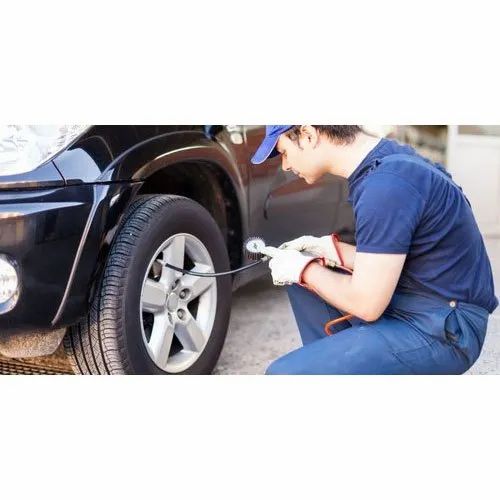
class="w1000">
In our branch on the street. Sorge, d. 7A there is a cafe. In it, you can comfortably spend time watching the work on your car on the monitors, as well as using high-speed free WI-FI.
Mobile tire service
Bead polishing
Professional tire service
Car interior repair
Paintless dent removal
We accept for payment:
UNIFIED INFORMATION:
+7 (495) 799-02-20
24/7
remontdiskov@mail.